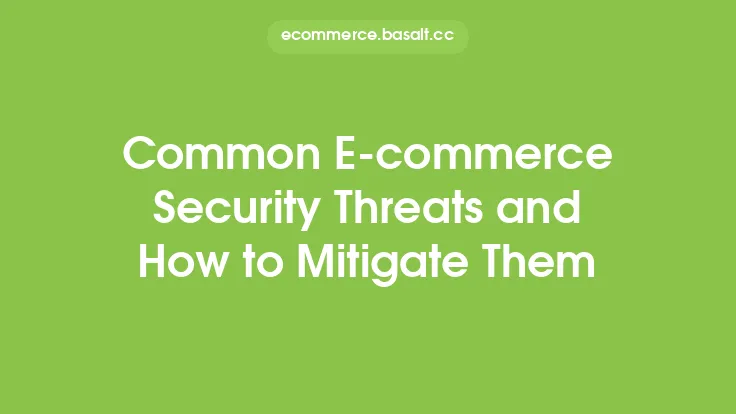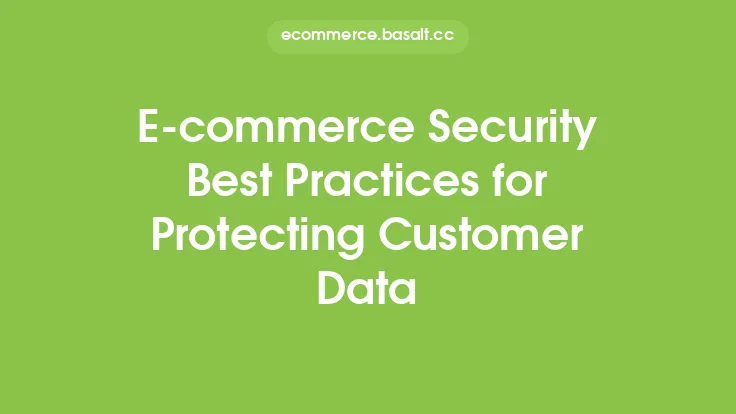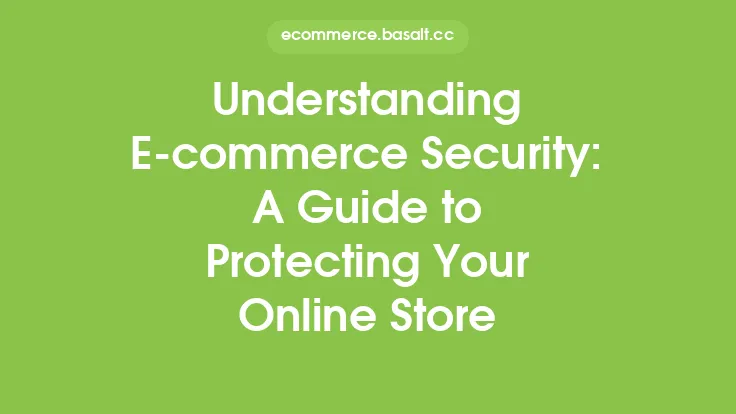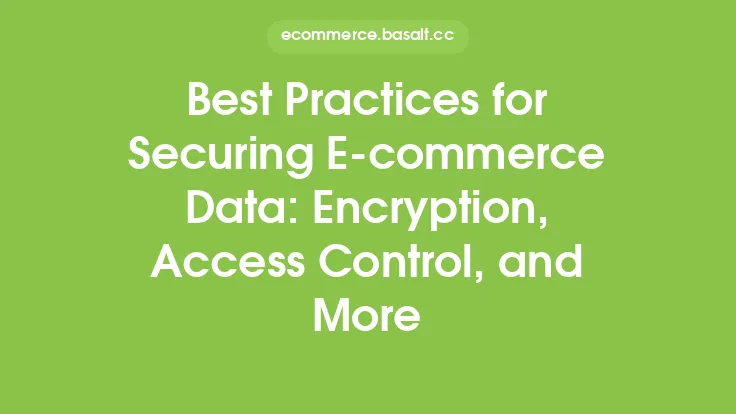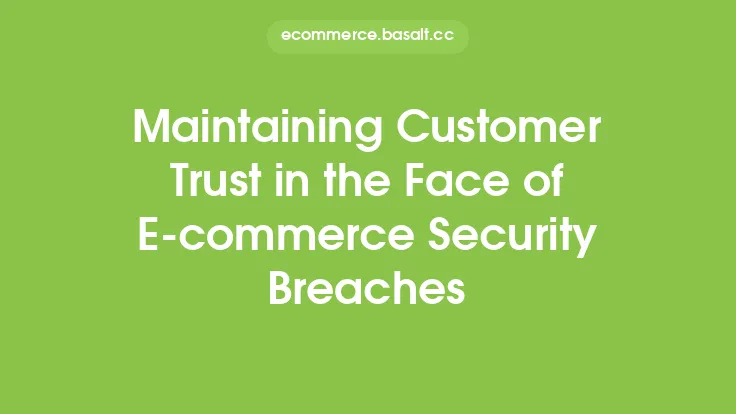As the e-commerce industry continues to grow, online stores are becoming increasingly vulnerable to hacking and data breaches. These cyber-attacks can result in significant financial losses, damage to reputation, and loss of customer trust. To prevent such incidents, it is essential for e-commerce businesses to implement robust security measures. In this article, we will discuss the various e-commerce security measures that can be taken to prevent hacking and data breaches.
Introduction to E-commerce Security Measures
E-commerce security measures are designed to protect online stores from various types of cyber-attacks, including hacking, malware, and phishing. These measures can be categorized into several types, including network security, application security, and data security. Network security measures protect the e-commerce website's network from unauthorized access, while application security measures protect the website's applications and software from vulnerabilities. Data security measures, on the other hand, protect sensitive customer data, such as credit card numbers and personal information.
Network Security Measures
Network security measures are essential for preventing hacking and data breaches. Some of the most effective network security measures include firewalls, intrusion detection systems, and virtual private networks (VPNs). Firewalls act as a barrier between the e-commerce website's network and the internet, blocking unauthorized access to the network. Intrusion detection systems monitor the network for suspicious activity and alert the website's administrators in case of a potential threat. VPNs encrypt internet traffic, making it difficult for hackers to intercept sensitive data.
Application Security Measures
Application security measures are designed to protect the e-commerce website's applications and software from vulnerabilities. Some of the most effective application security measures include secure coding practices, regular software updates, and vulnerability scanning. Secure coding practices ensure that the website's applications are developed with security in mind, reducing the risk of vulnerabilities. Regular software updates patch vulnerabilities and fix bugs, making it difficult for hackers to exploit them. Vulnerability scanning identifies potential vulnerabilities in the website's applications, allowing administrators to take corrective action.
Data Security Measures
Data security measures are essential for protecting sensitive customer data. Some of the most effective data security measures include encryption, access controls, and data backups. Encryption converts sensitive data into an unreadable format, making it difficult for hackers to intercept and exploit. Access controls limit access to sensitive data, ensuring that only authorized personnel can view or modify it. Data backups ensure that sensitive data is not lost in case of a data breach or other disaster, allowing administrators to quickly recover and restore the data.
Payment Card Industry Data Security Standard (PCI DSS) Compliance
PCI DSS compliance is essential for e-commerce businesses that handle credit card information. PCI DSS is a set of security standards designed to protect credit card information from unauthorized access. To achieve PCI DSS compliance, e-commerce businesses must implement various security measures, including firewalls, intrusion detection systems, and encryption. They must also conduct regular security audits and vulnerability scanning to identify potential vulnerabilities.
Incident Response Planning
Incident response planning is essential for e-commerce businesses to respond quickly and effectively in case of a data breach or other security incident. An incident response plan outlines the procedures to be followed in case of a security incident, including notification of affected parties, containment of the incident, and eradication of the root cause. The plan should also include procedures for post-incident activities, such as recovery and restoration of systems and data.
Security Information and Event Management (SIEM) Systems
SIEM systems are designed to monitor and analyze security-related data from various sources, including network devices, applications, and systems. These systems provide real-time alerts and notifications in case of a potential security threat, allowing administrators to take corrective action. SIEM systems also provide detailed reports and analytics, helping administrators to identify potential vulnerabilities and improve the overall security posture of the e-commerce website.
Conclusion
In conclusion, e-commerce security measures are essential for preventing hacking and data breaches. By implementing robust network security, application security, and data security measures, e-commerce businesses can protect their online stores from various types of cyber-attacks. PCI DSS compliance, incident response planning, and SIEM systems are also essential for ensuring the security and integrity of e-commerce websites. By following these security measures, e-commerce businesses can protect their customers' sensitive data, prevent financial losses, and maintain their reputation and customer trust.
